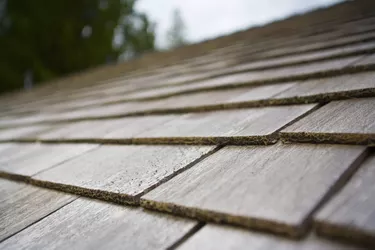
Owning a rental property has certain tax advantages. Landlords can deduct one-year expenses, such as leasing agent's fees, from the rent they receive thus reducing taxable income. They can also deduct the cost of improvements that have a useful life beyond one year on their tax return. The Internal Revenue Service lets landlords depreciate residential property improvements over a recovery period of 27.5 years. Taxpayers should claim the deduction on Schedule E of their tax return and file form 4562 in the year the new roof is put in service.
Decide if the New Roof Is a Capital Improvement
Video of the Day
A capital improvement is any major replacement or renovation that betters the rental property or restores it to its former condition. By contrast, a repair merely keeps the property in operating condition and does not improve it in any way. Capital improvements qualify for depreciation; repairs are a one-time deductible expense. Fixing a leaking roof is an example of a repair. Replacing the roof, or a substantial part of it, will usually be a capital improvement. If in doubt, ask a tax accountant or the IRS.
Video of the Day
Figure Out the Beginning and End Dates
Depreciation starts when you bring the new roof into service. If the property is tenanted, you bring the roof into service on the day you install it. If the property is unoccupied, you bring the roof into service when you next lease the rental property. Depreciation ends after 27.5 years, when you have fully recovered the cost of the new roof. You may have to make adjustment to your tax return if you sell the property or stop using it as a rental home before that date.
Calculate the Write-Off
Once you know the start date, calculating the depreciation is reasonably straightforward. First collect your receipts and calculate the total cost of the new roof. Improvements are depreciated using the straight-line method, which means that you must deduct the same amount every year over the useful life of the roof. The IRS designates a useful life of 27.5 years, so, divide the total cost of the roof by 27.5 to reach the amount you are able to deduct each year.
Claim the Deduction
Individual taxpayers report income and expenses for rental properties on Schedule E of form 1040. Take your annual depreciation deduction and prorate it for the number of months the roof was in service during the first tax year -- this is the figure you enter in line 18. You must also file form 4562 in the year you first place the roof in service. The guidance notes explain in detail how to complete the tax forms.